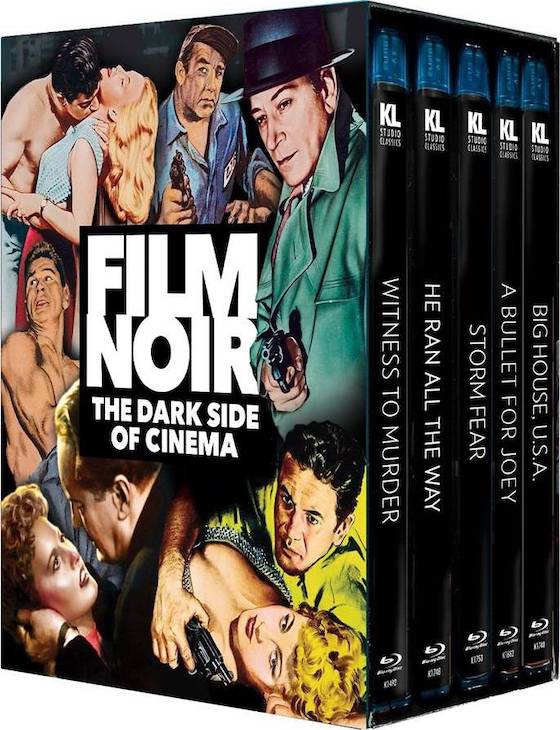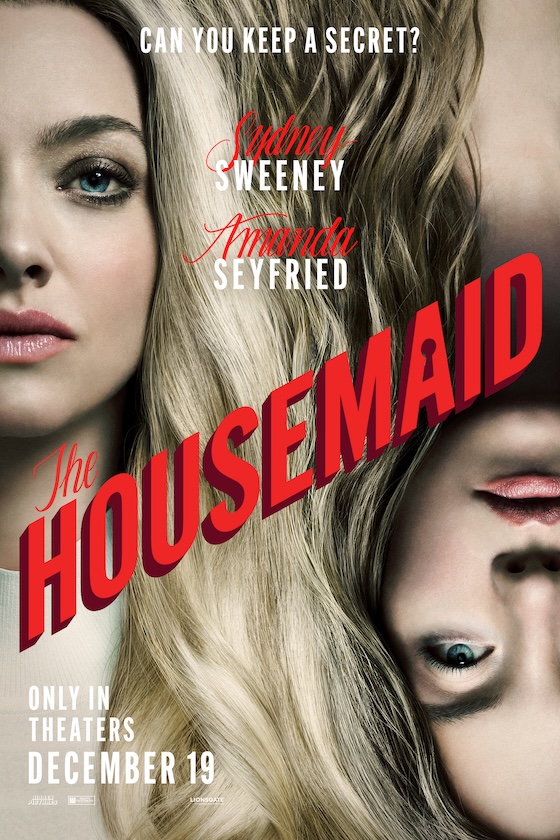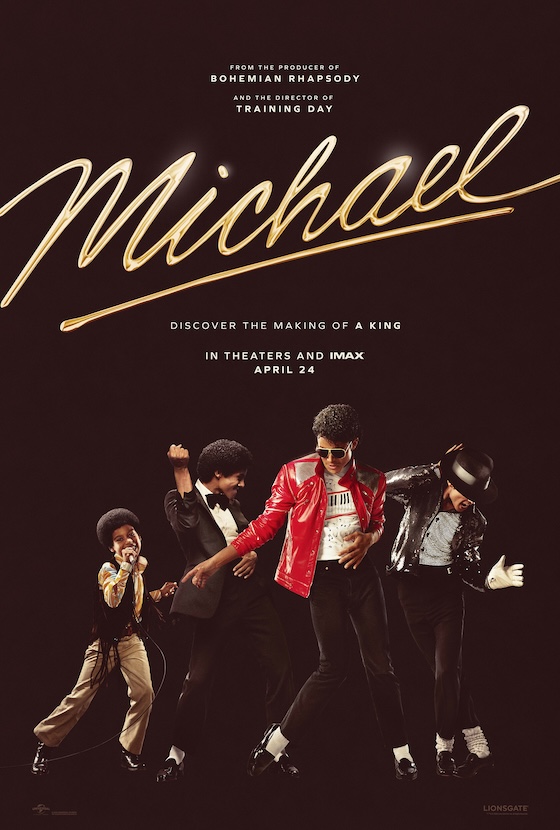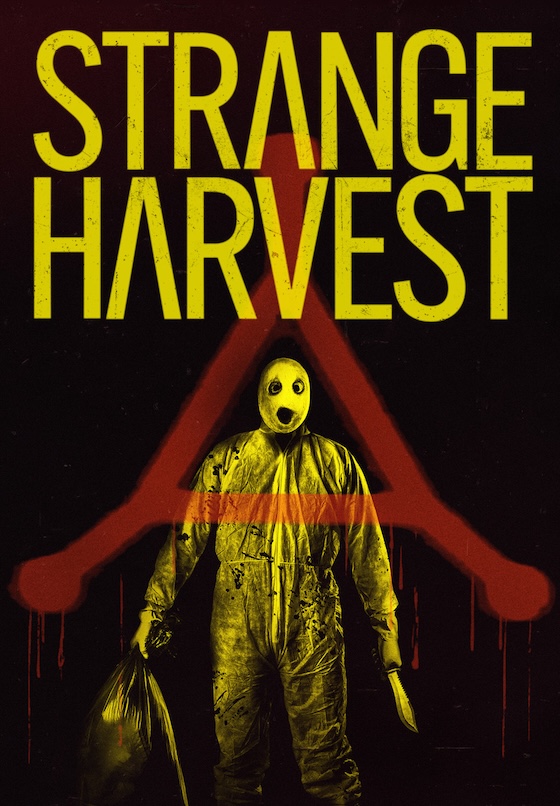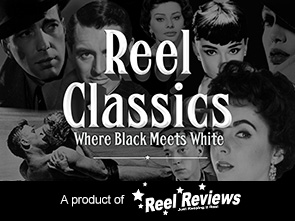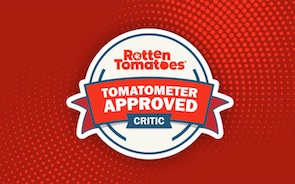Movie Review
Blu-ray Review
Art
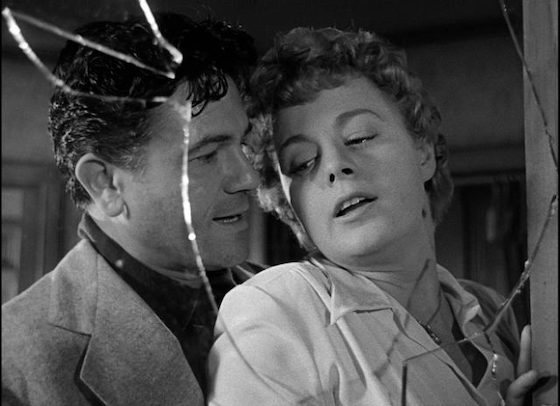
“You’ll eat my dinner or one of you walks out of here with a bullet in his head.”
John Garfield, one of the original rebels in film cinema, is absolutely on fire in He Ran All The Way and, sitting right next to him, is Shelley Winters, a true partner in crime, as Garfield - in one key sequence - forces her entire family to eat his dinner at gunpoint. It’s a tense scene, full of envy and scorn, as Garfield’s character discovers that he’s nothing to them.
Shot in 1951, He Ran All The Way is an excellent crime noir film that, unfortunately, got a lot of attention at the time of its release because almost everyone working on the cast and crew were accused of being communists. In it, we see a desperate man - who still lives at home with his mother - try unsuccessfully to be like everybody else.
In it, Garfield plays a small time thief who lets his paranoia get the best of him. But their chemistry is unshakable. Too bad Garfield, whose Bronson-like looks and swagger couldn’t help him escape the U.S. Congressional House Committee on Un-American Activities when he denied being a communist and refused to name names, didn’t have a longer career. His acting is top notch throughout this thriller as he sets the bar high for all the cinematic rebels to come.
Nick Robey (Garfield) has about $10,000 on him from a robbery gone awry. He carries on with his life as if leaving his partner behind and shooting a cop was no big deal. He goes swimming and, using one of the lockers provided, stuffs the money and his clothes in it. That’s when he meets Peg Dobbs (Winters), whom he immediately falls for. {googleads}
But Robey is a little unstable. The first sign of this - or the second and third - is when he thinks his locker at the swimming pool has been robbed. He panics and grabs an attendant, demanding that he do something. It’s Robey who is wrong, though. He had the wrong locker and once reunited with the stolen money and his clothes, waits for Peg outside the public pool
And so begins their whirlwind romance as the battle between the Haves and Have-Nots becomes a free-for-all as lines are drawn and doubts are cast as to the value of human lives to each other.
Peg promises to keep him safe. She promises a lot of things, but she couldn’t foresee that Nick - his paranoia running at top speed - would take her parents, Wallace Ford as Mr. Dobbs and Selena Royle as Mrs. Dobbs, hostage, demanding that they not rat him out. As long as he’s safe, they remain safe. And so begins the long ordeal.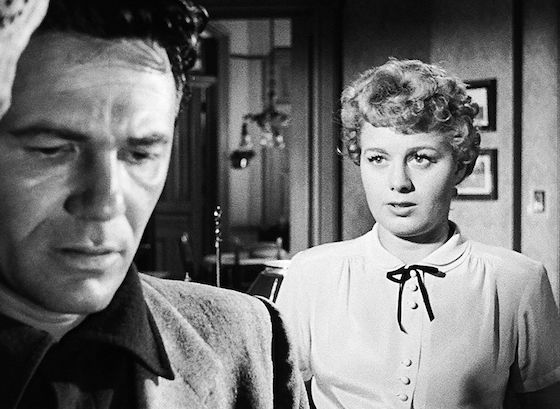
Directed by John Barry and written by Dalton Trumbo and Hugo Butler, He Ran All The Way is an early example of method acting (thanks to Garfield and Winters) and doubles as a blistering example of tense and fatalistic film noir, rich in atmosphere and nihilism. This is made clear thanks to the striking cinematography of James Wong Howe, a Chinese American cinematographer who was always desired due to his master use of shadows, intense close-ups, and willingness to experiment with the camera. And, here, his technique is employed masterfully.
Film Noir, as a genre in film stems from the assault of way too many “Happy Endings” in Hollywood. It’s a natural response full of pessimism and fatalism and, as a result, it butters this reviewer’s bread. For about a decade, writers and directors could see that audiences weren’t interested in fairy tales anymore. There was too much poverty; too much death and destruction; too many wars. And the push to urban life had created an economic disparity that lingered long after any romantic ending did.
People needed the darkness to be acknowledged and, from 1944 to 1955, it was cinema’s prime celebrity as highly cinematographic films - cheaply made - fell onto the rain-soaked streets of Home Town, USA. He Ran All The Way, now on blu-ray thanks to Kino Lorber’s Film Noir: The Dark Side of Cinema, Volume I, is merely one offering from that era of filmmaking. There are four other titles, including A Bullet For Joey, Witness to Murder, Storm Fear, and Big House, U.S.A!


![]()
Blu-ray Details:
Home Video Distributor: Kino Lorber
Available on Blu-ray - May 24, 2016
Screen Formats: 1.85:1, 1.75:1, 1.37:1
Subtitles: English SDH, French, Spanish
Audio: English: DTS-HD Master Audio 2.0
Discs: Blu-ray Disc; five-disc set
Region Encoding: Locked to Region A
In this set from Kino Lorber, all 4 films were newly remastered in HD! A Bullet For Joey (1955) When a Canadian police inspector (Edward G. Robinson) investigates a murder, he is hurtled into an adventure involving foreign spies, American gangsters and an explosive high-tech secret that could change the world, co-starring George Raft. He Ran All The Way (1951) John Garfield plays a dim-witted thug who survives a shootout with the police after a payroll robbery. Seeking cover, he meets Peg a lonely young girl (Shelley Winters) who takes him to her family's apartment, while there the paranoid thief decides to take the family hostage until he can escape. Storm Fear (1955) Cornel Wilde plays a wounded bank robber, on the run from the law, he and his gang decide to hide out at his brother (Dan Duryea) and sister-in-law's (Jean Wallace) farmhouse during a snowstorm. Witness to Murder (1954) A woman (Barbara Stanwyck) fights to convince the police that she witnessed a murder. Co-starring George Sanders and Gary Merrill.
Video:
With a crisp black-and-white transfer, He Ran All The Way lands on blu-ray thanks to the crackling efforts of Kino Lorber. Shadows, while not too terribly detailed, are thick and atmospheric throughout. Presented with an aspect ratio of 1.75:1, the film looks marvelous and easily beats the poor appearance on television and on home video DVD that has previously dogged it. The blacks and grays are handled expertly by the transfer. Beads of sweat are visible, wet city streets, textures in clothing, and even the dirt in the pavement is all visible with fine textures throughout.
Audio:
Bang! Bang! Bang! Shots are fired on the DTS-HD Master Audio 2.0 track which accompanies this film noir flick.
Supplements:
Commentary:
- None
Special Features:
There is only a trailer.
- Original Theatrical Trailer
Blu-ray Rating:
| Movie |  |
|
| Video |  |
|
| Audio |  |
|
| Extras |  |
|
|
Overall Blu-ray Experience
|
||
{googleads}
